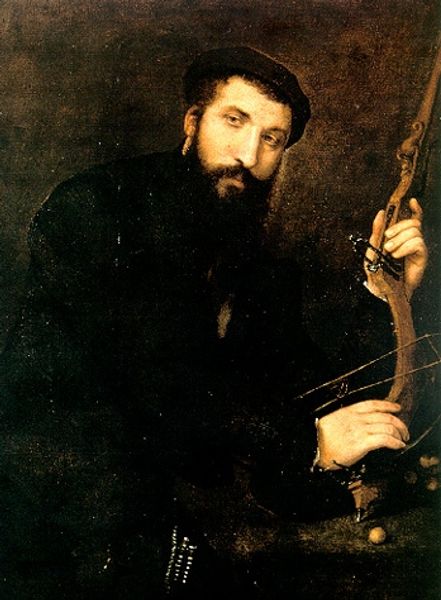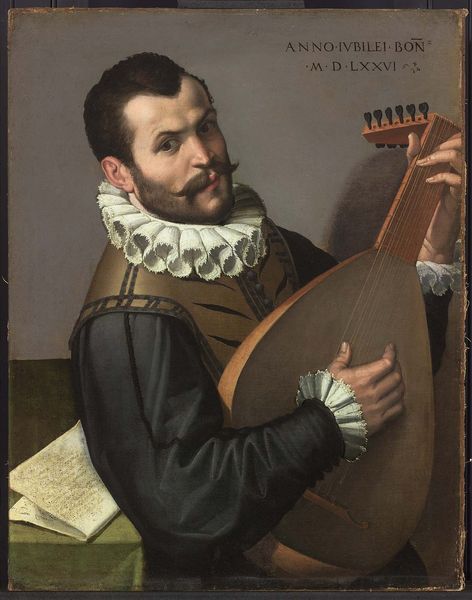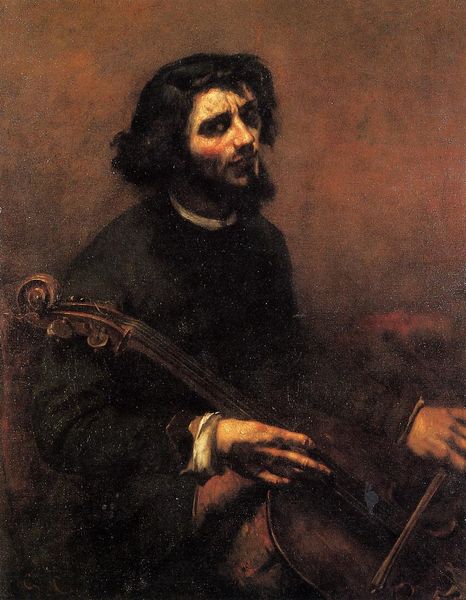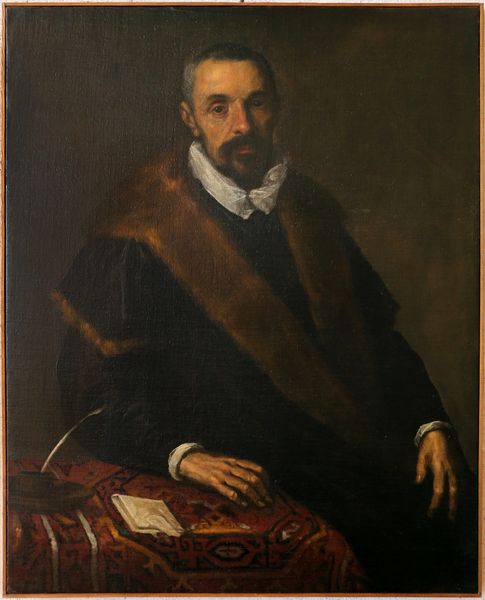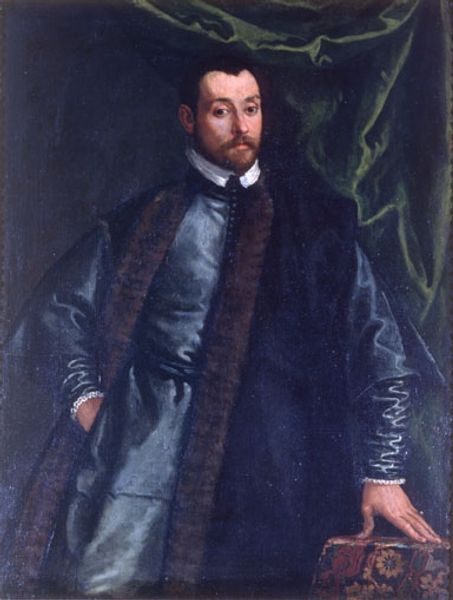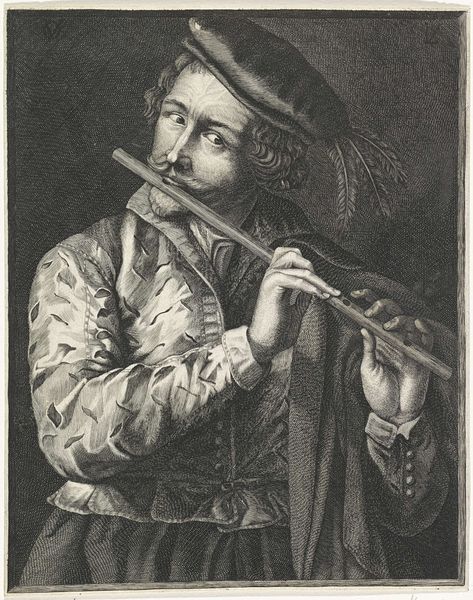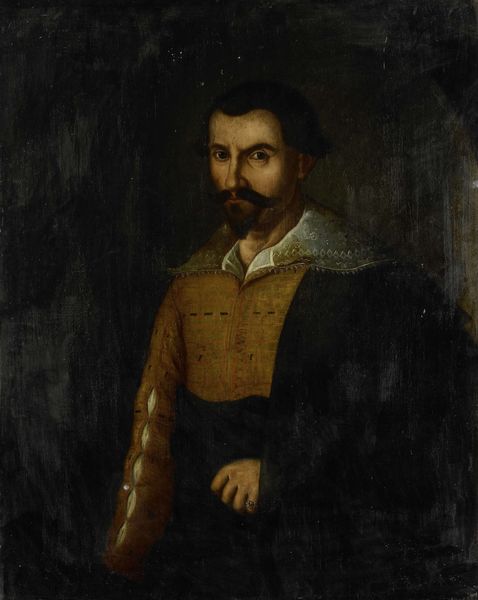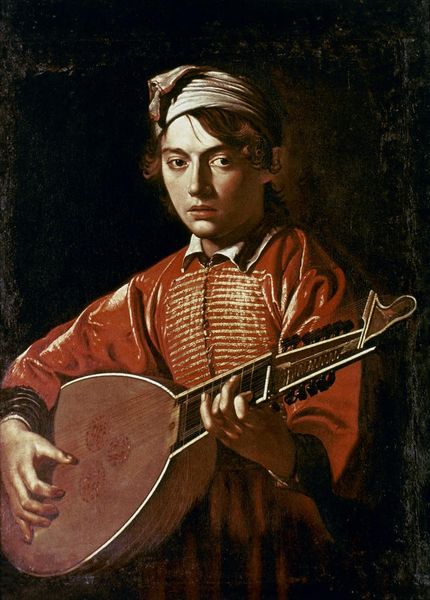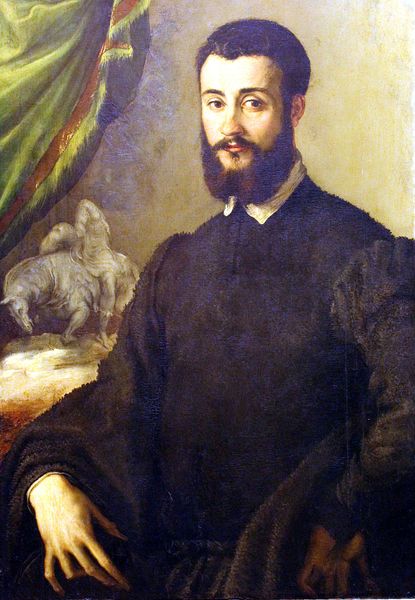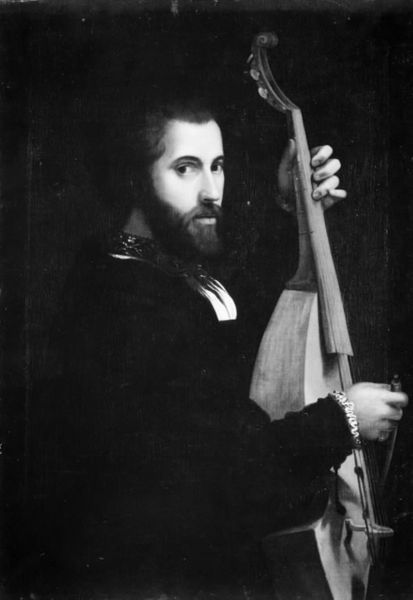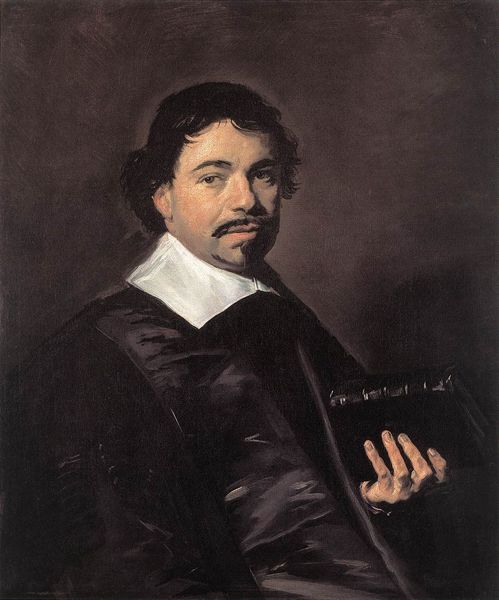
painting, oil-paint
#
portrait
#
baroque
#
painting
#
oil-paint
#
11_renaissance
#
italian-renaissance
Dimensions: 77 x 64 cm
Copyright: Public domain
Curator: Here we have Annibale Carracci’s "Portrait of Giovanni Gabrieli with the lute," created around 1600, an exquisite example of Italian Renaissance portraiture. Editor: Immediately, I'm struck by the subject's gaze—intense, somewhat melancholic, but certainly magnetic. The tenebrism creates a very dramatic mood, one wonders if this resonates with his personal history or social standing. Curator: Let's delve into that interplay of light and shadow. Carracci's meticulous attention to rendering textures, from the intricate lace collar to the smooth lute, displays the formal structure through chiaroscuro, defining form and space, a distinct hallmark of the Baroque emerging at the time. Editor: Indeed. Consider Venice in this period: Gabrieli would have experienced a moment where political instability affected music. The somber colors used for clothing contrasted with the bright whiteness of his collar denote his elevated social standing but maybe this stark contrast is telling of class divisions? How does this artwork support narratives of elitism and class differences in the Italian Renaissance? Curator: Intriguing points. Structurally, we see a dynamic triangular composition created through the positioning of the lute in contrast with the figure, his posture, and the music sheet at the bottom. This directs our focus toward Gabrieli’s hands, skillfully poised over the instrument, and then up to his face, completing the visual loop. Editor: And to what degree is Carracci engaging with contemporary notions of performativity through this portrait, both for himself and his subject? Composers like Gabrieli would have struggled in those years of plague and conflicts; he is both ennobled by the portrait and rendered strangely mortal, with the shadows on his skin perhaps alluding to mortality. Curator: One could even argue that the painting functions semiotically, acting as an allegory. The lute symbolizes harmony, music symbolizes order, and the very act of capturing his likeness suggests a desire to transcend time through artistic representation. Editor: This resonates beyond mere representation. In capturing Giovanni Gabrieli, a musician during tumultuous times, Carracci might also reflect upon questions around the meaning and possibilities of representation and its connection to larger sociopolitical contexts, making his practice even more resonant to us. Curator: Thinking purely aesthetically, it's remarkable how Carracci elevates portraiture beyond simple likeness, using compositional techniques to express much more than the figure presented. Editor: Yes, considering the Italian Renaissance's concerns about representation is necessary to understanding art’s enduring impact.
Comments
No comments
Be the first to comment and join the conversation on the ultimate creative platform.
